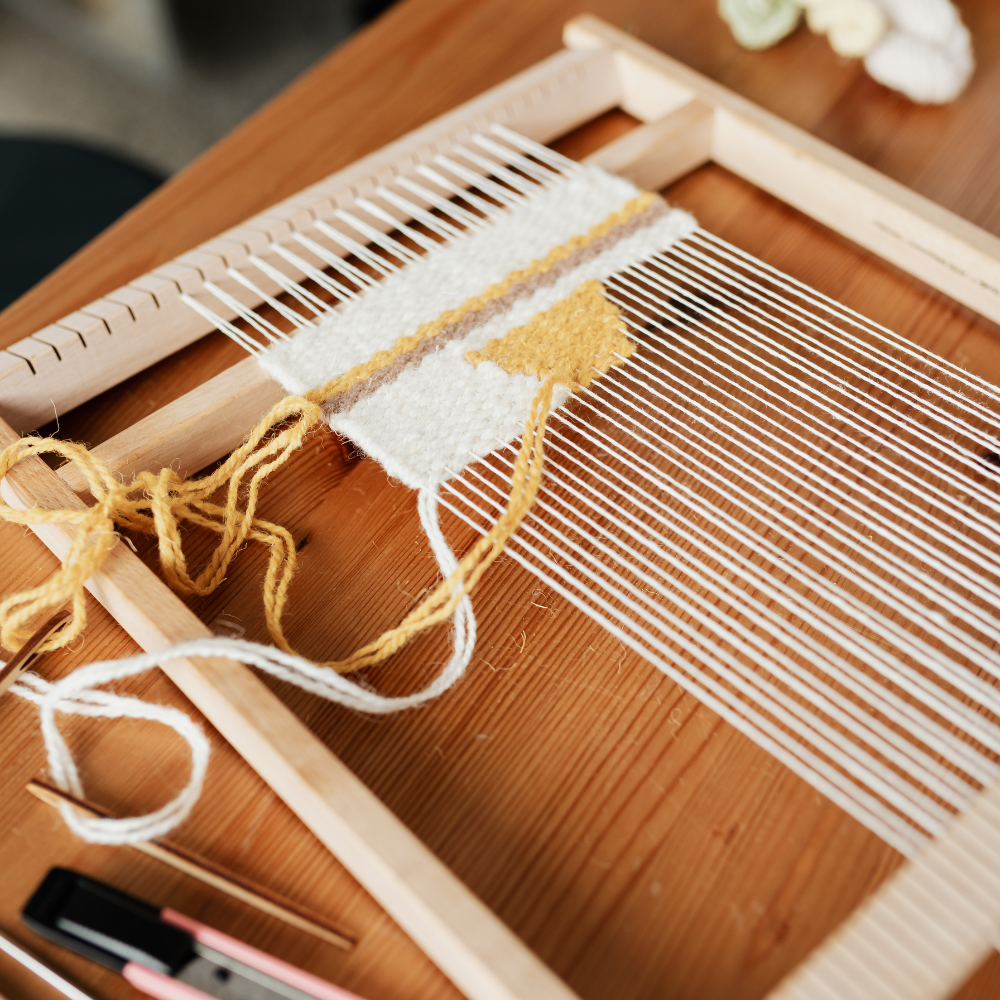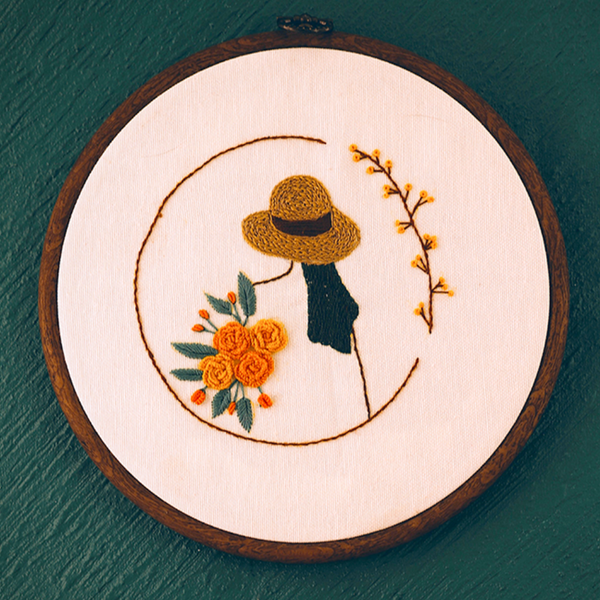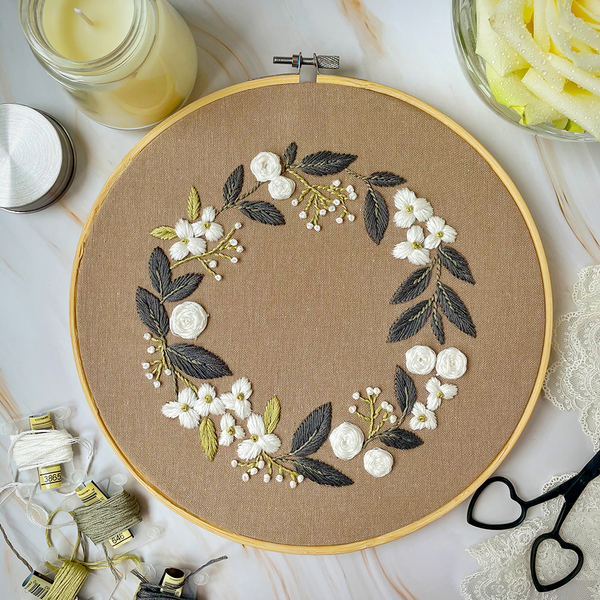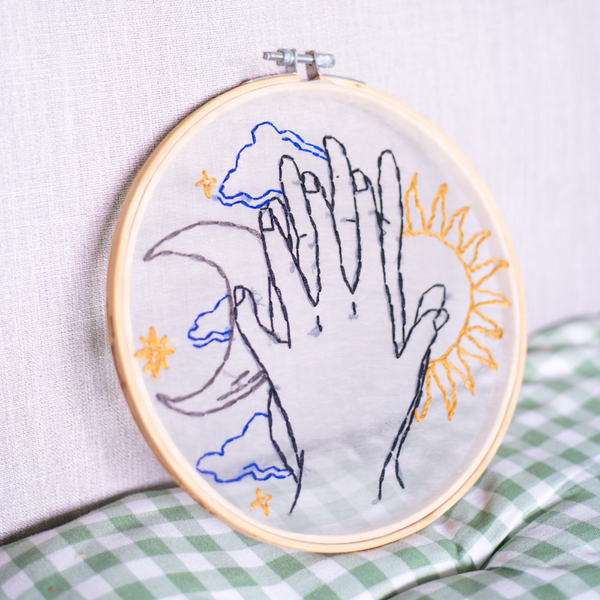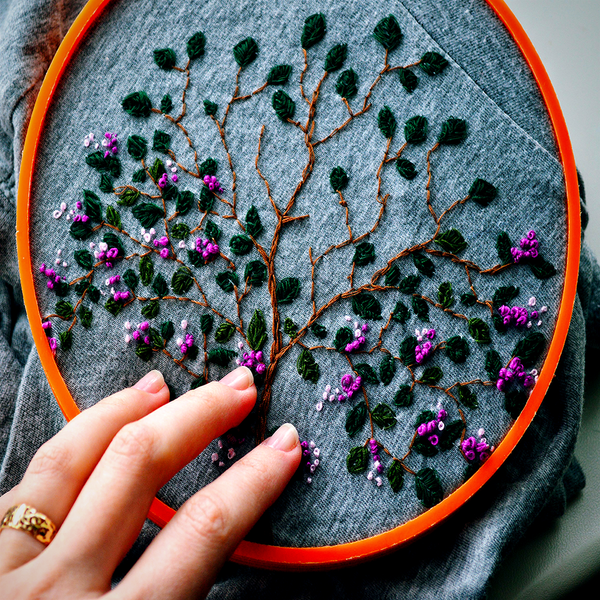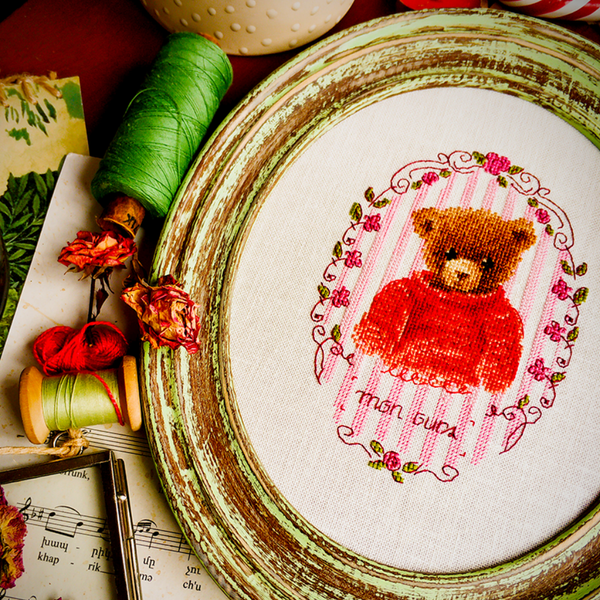Are you tired of the same old humdrum routine?
Are you looking for a fun and creative outlet that will help whisk away your worries while simultaneously allowing you to express yourself in an artistic way?
Consider weaving; not only is it a beautifully relaxing craft, but it's also a great way to upcycle old t-shirts and scraps of fabric.
Weaving has been around for centuries, being used by cultures all over the world to create beautiful items such as baskets, clothing, blankets and more - but it is also becoming increasingly popular as a form of art therapy.
In today's post, we'll explore why weaving can be enjoyable, practical and therapeutic all at once!
The rich history of weaving, the basics of getting started, the surprising benefits of this ancient art, and the fun and creative possibilities for weaving today are all within your reach.
It's time to put your stress aside for now and unravel the world of weaving with us today; chances are high that it may become one of your new favorite hobbies!
So, buckle up, hold onto your looms, and let's weave our way through a captivating journey!



The Threads of Time: A Brief History of Weaving
Weaving is an age-old craft that dates back to the Neolithic period, around 12,000 years ago.
Our ancestors quickly realized that intertwining fibers together could create durable and versatile materials and woven cloth.
From clothing to shelter, weaving became an essential part of human survival, and weaving traditions were passed from generation to generation.
Over time, weaving techniques evolved, with different cultures adding their unique twists and patterns.
From the intricate tapestries of Europe to the vibrant textiles of South America, weaving has become a beautiful expression of cultural identity.
Today, weaving is often regarded as an art form, used to create complex and beautiful pieces of fabric, and the textile industry is currently worth billions.
It has been a source of creativity for many cultures and is still used to pass down traditional skills to the next generation.
It's clear that weaving has stood the test of time, and it continues to be a source of inspiration for both beginners and experts alike.
Fun fact: Did you know that the word "textile" originates from the Latin word "texere," which means "to weave"?
Talk about a linguistic throwback!
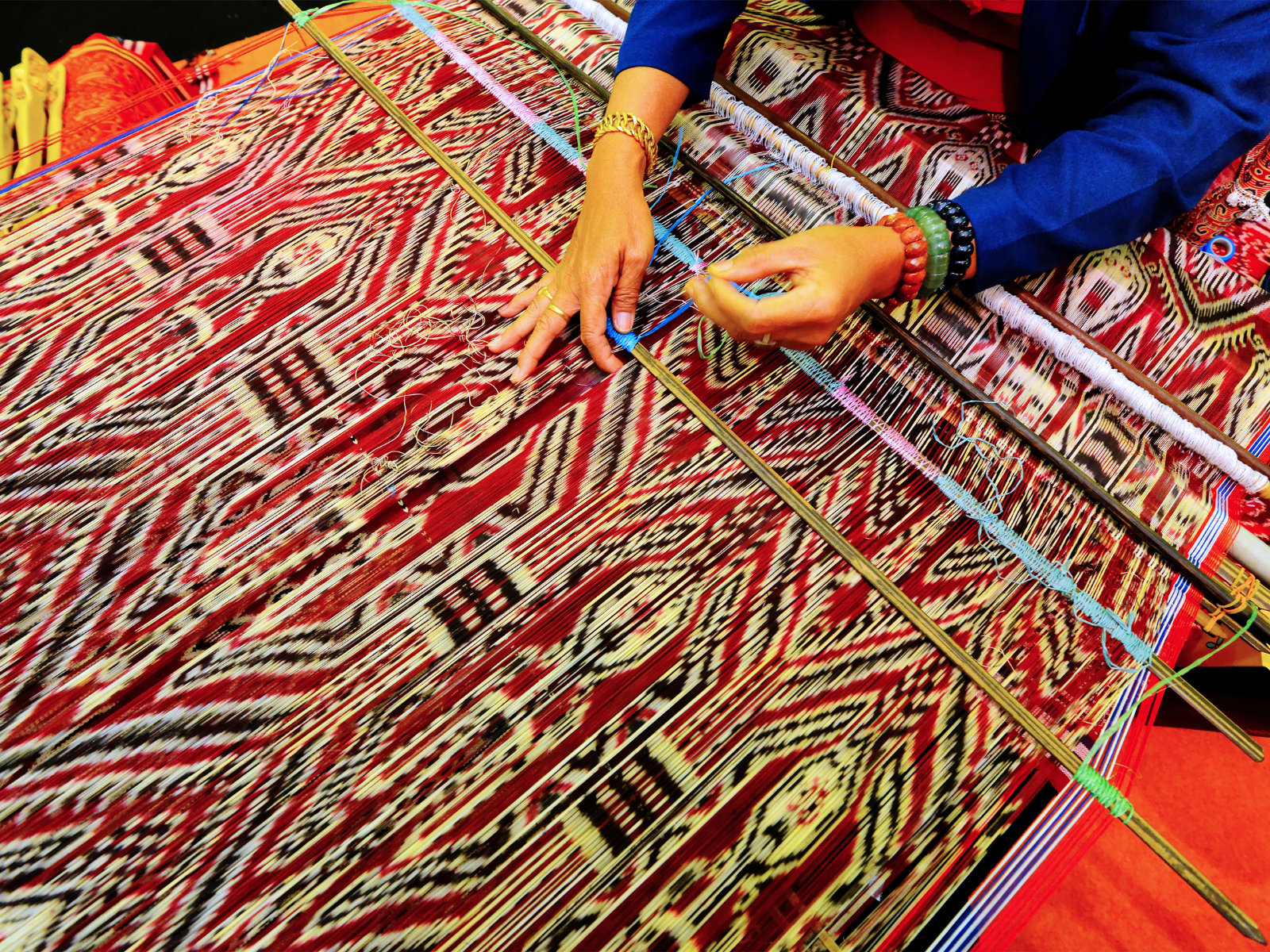

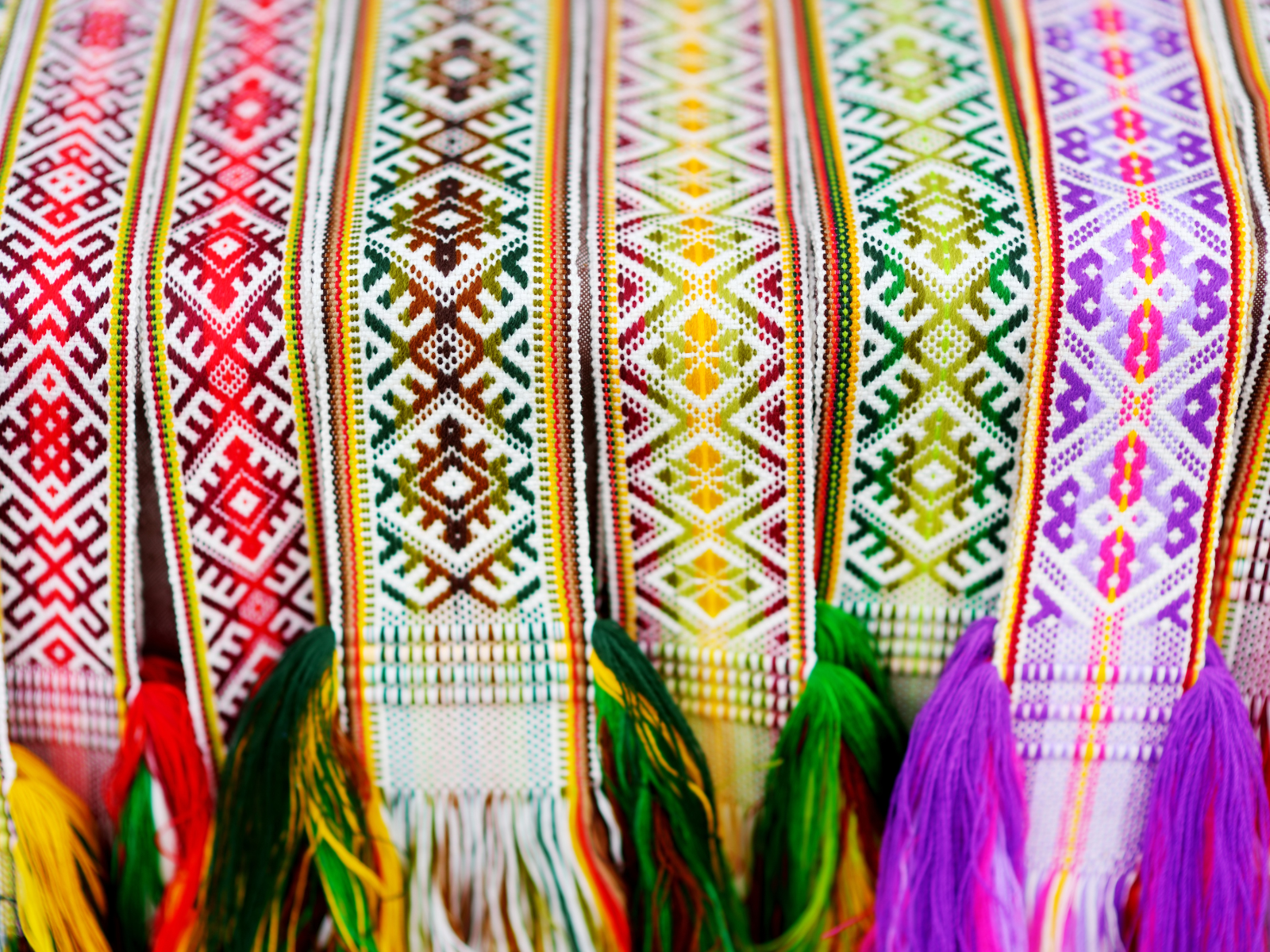
Types of Weaving
Now that we've had a quick look at the history of weaving, let's take a look at some of the different types of weaving available today.
The weaving loom is the tool of choice for many weavers, and there are a few different types to choose from.
From basic frames to complex mechanical looms, there are a variety of tools and techniques that can be used to create stunning pieces of fabric arts and crafts.
Here are a few of the most popular methods:
- Frame looms:
These looms are by far the simplest type and consist of a wooden frame with nails, pegs or cords.
These looms are great for beginners because they can be used to make small pieces of fabric and are easy to set up.
- Inkle looms:
These looms are slightly more complex than frame looms and consist of a wooden frame with several slots.
Inkle looms are great for making longer and narrower pieces of fabric, such as straps and bands.
- Tabletop looms:
These looms are great for creating larger pieces of fabric and can be used to make intricate designs.
These looms require a bit more dexterity, but they can be a great way to add variety to your weaving portfolio.
- Lap looms:
The lap loom is a great way to take your weaving projects on the go.
These small, portable looms can be easily carried around, so you can weave wherever your creative spirit takes you!
- Mechanical looms:
These looms are the most complex, but they are also the most efficient.
Mechanical looms are great for making large batches of fabric quickly and can be used to weave intricate designs.
These looms require a bit of technical knowledge, so they may not be suitable for beginners.
- Basket weaving:
This type of weaving is often used to make baskets, although it can also be used to create other items such as hampers and trays.
Basket weaving is a great way to add texture and dimension to your fabric artwork.
- Rugs and tapestries:
These larger pieces of fabric can be created using a variety of different looms.
They require more time and patience, but the results are well worth it!
- Finger weaving:
Finger weaving is a great way to make smaller pieces of fabric, such as jewelry.
This method requires no looms or tools; all you need is your own two hands!
As you can see, there are a variety of weaving techniques that can be used to create stunning pieces of fabric.
Now that you know more about types of weaving, let's take a look at how you can get started on your next woven masterpiece!
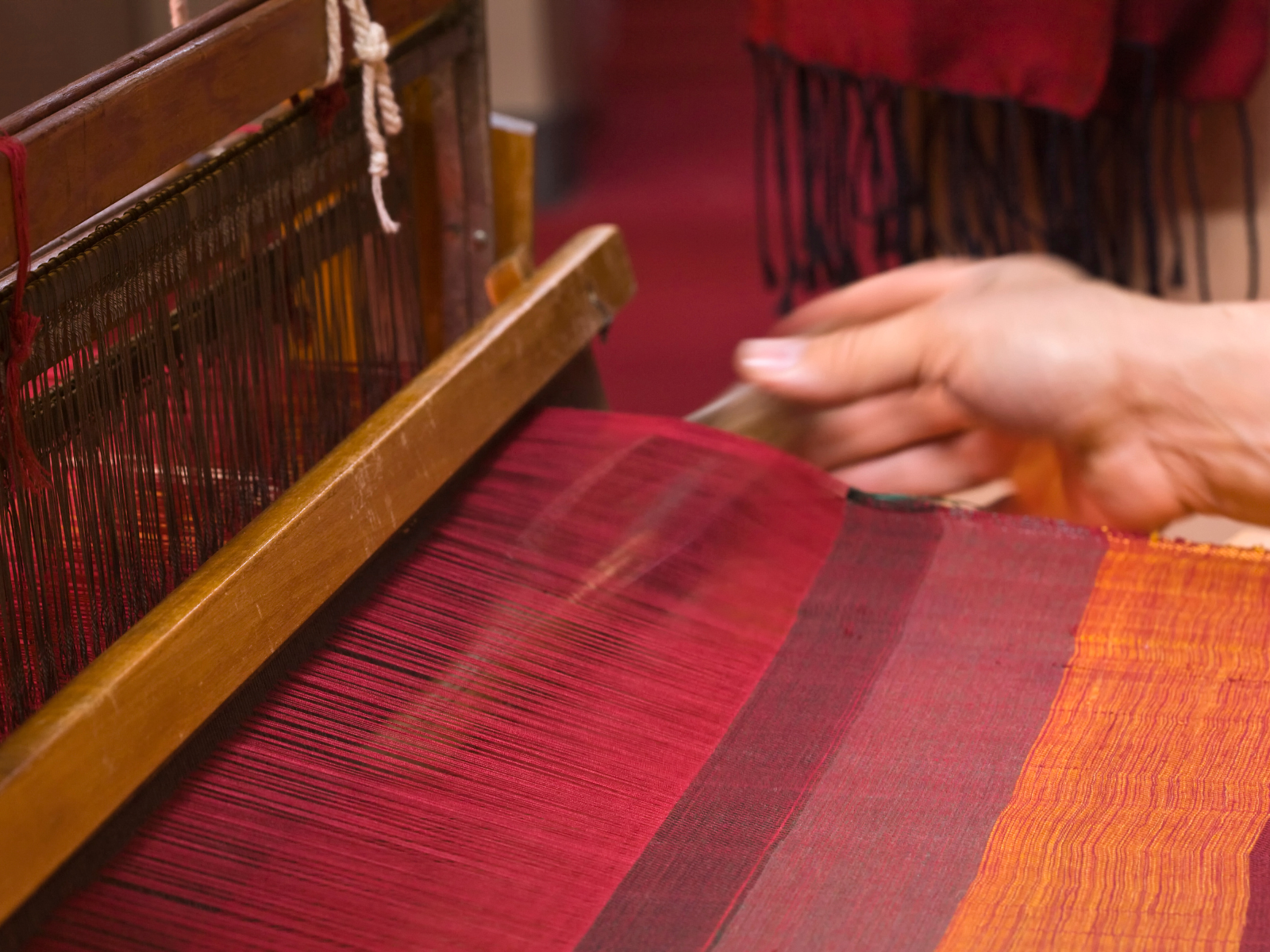


Looming Large: Getting Started with Weaving
Ready to try your hand at weaving?
Here's a quick guide to help you get started.
- Choose your technique and supplies:
There are various types of looms available, from traditional floor looms to portable lap looms, so you'll want to pick out your own loom for your chosen weaving technique.
For beginners, a simple frame loom is a great starting point; more complicated looms can be used once you've become more familiar with the craft.
You'll also need some basic supplies, such as yarn or fabric, a shuttle for passing the thread between the warp thread, and scissors.
Yarn or thread is needed for both the warp (vertical threads) and weft thread (horizontal threads); thin yarn is generally best for beginners, as it's easier to work with.
Filling yarns and fabric strips can also be used, depending on your desired outcome.
Feel free to experiment with colors and textures – the creative possibilities are endless!
- Set up your loom:
Attach the warp threads to your loom, ensuring they're taut and evenly spaced.
Remember, a well-prepped loom is the key to weaving success!
- Start weaving:
Using a needle or your fingers, weave the weft threads over and under the warp threads.
Simple weaves, such as tabby or plain weave, are great for beginners.
From there, you can explore more complex weaving patterns and tapestry techniques.
As you progress, you'll discover various techniques and patterns to create unique designs.
- Enjoy the process:
Weaving is all about patience and dedication.
Gently pull the threads and go at your own pace; it may take some practice to get it just right, but you'll eventually develop a steady rhythm.
Take your time, enjoy the creative process, and revel in the satisfaction of creating something beautiful with your own two hands!
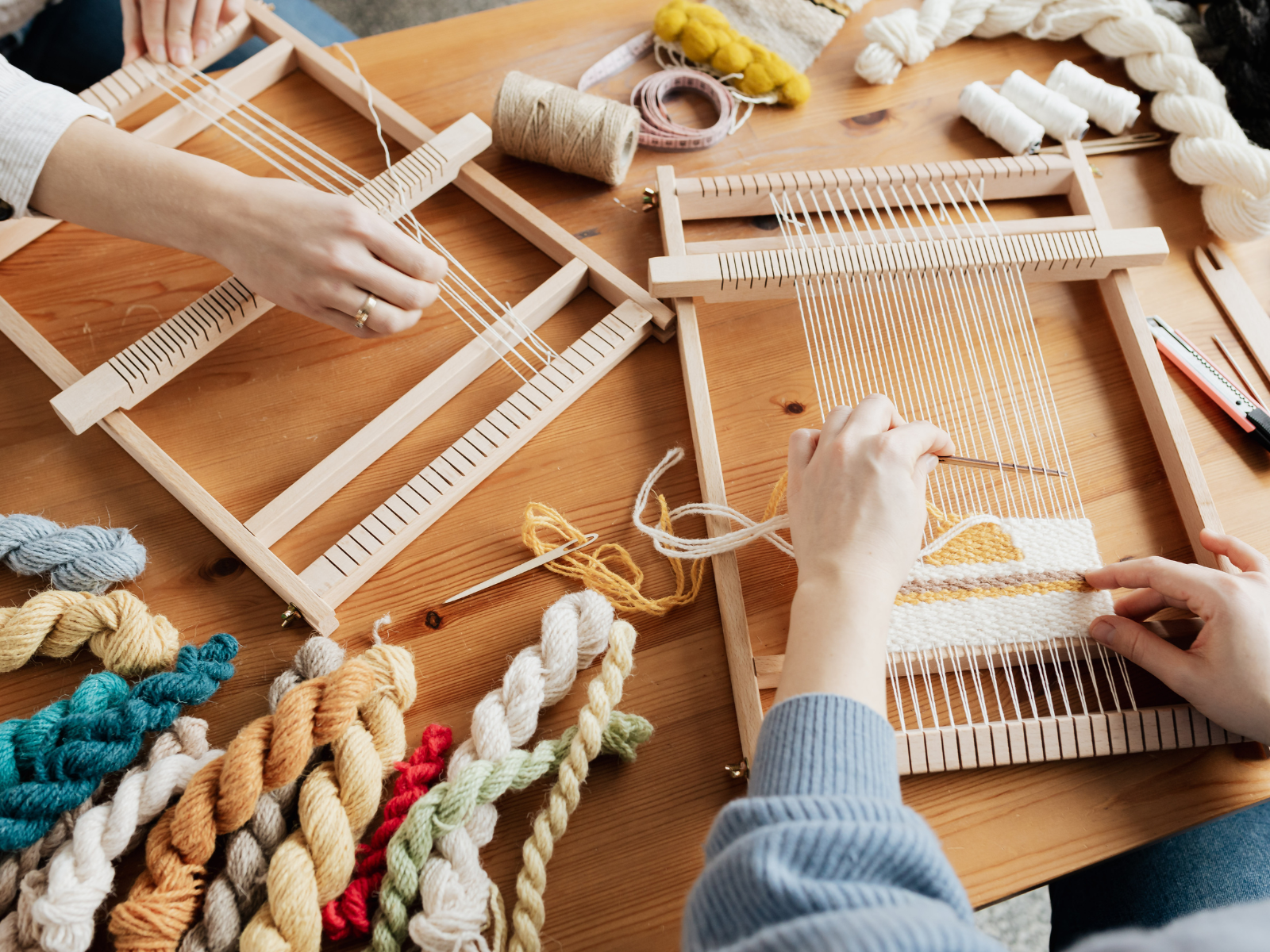
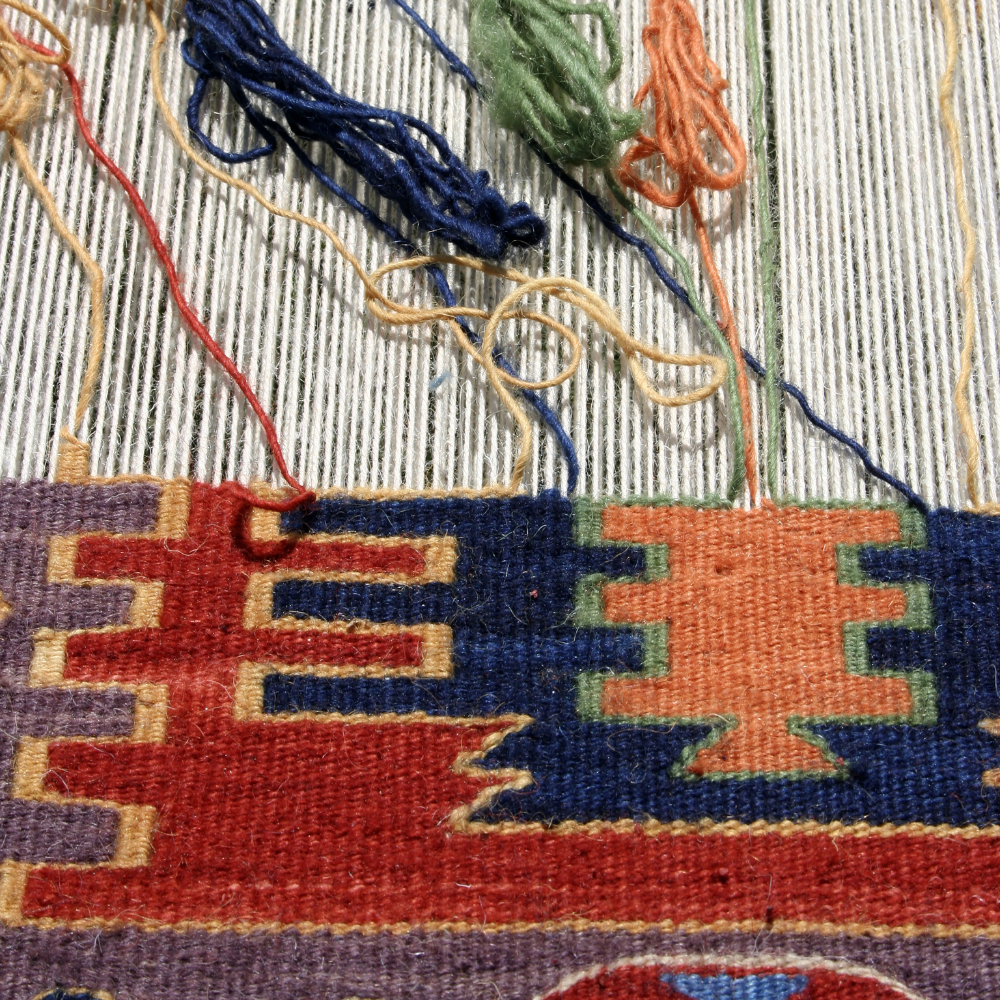
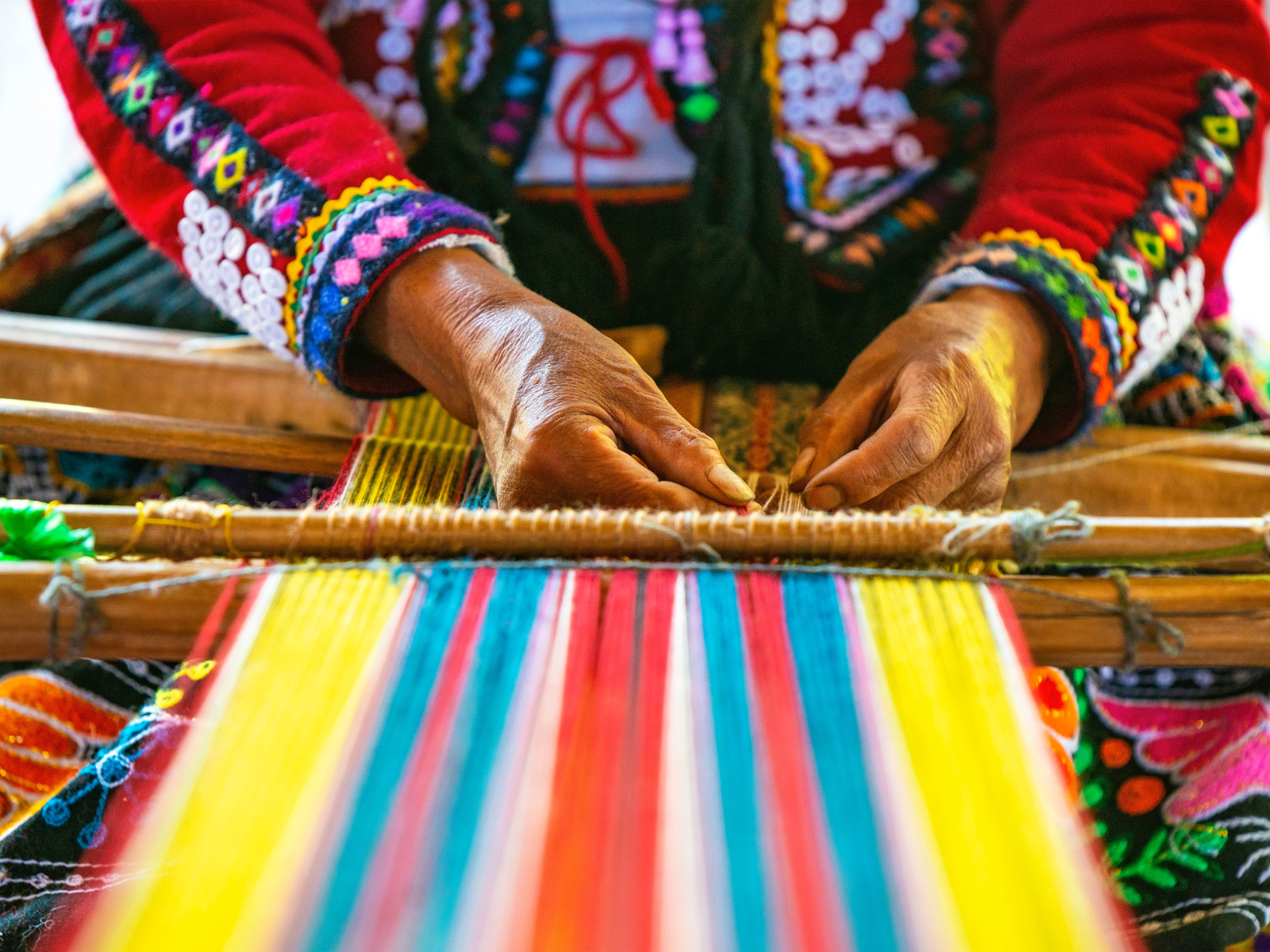
Weaving Tips and Tricks
Weaving is a wonderful art form that can take time and patience to master.
Beginners may feel overwhelmed at first, but don't worry – we've got you covered!
If you want to take your weaving skills to the next level, here are a few extra tips and tricks to help you on your creative journey.
- Experiment:
To start, experiment with different weaving tools and materials.
You don't have to go out and grab the fanciest, most expensive loom on the market.
In fact, you can make your own with things like cardboard or even just a picture frame.
Don't be afraid to mix it up and try different tools until you find what works best for you.
When it comes to yarn and fabric, natural fibers tend to work best for weaving.
This includes wool, linen, cotton, and silk.
Experiment with different fibers to see which ones you like best; each type of yarn or fabric will create a unique texture and effect.
- Prevent unraveling:
There's nothing worse than spending hours weaving only for it to unravel!
Let's talk about how to secure your project and keep your weaving from unraveling.
One solution is to weave in your ends; this means taking the loose thread from one section and weaving it back into the piece a few times before trimming it.
You can also use a needle and thread to sew the ends together.
Another way to keep your weaving in place is to add a bit of glue.
While you don't want to coat the whole thing, a dab here and there can hold things together and prevent fraying.
You can also use fray check, which is a type of liquid that seals the edges of fabric.
- Picking patterns:
Once you've got the basics down, it's time to start exploring more complex patterns and designs.
There are a variety of patterns that can be used in weaving, from classic plaids to intricate geometric designs; you can create a wall hanging, a basket, a scarf, or whatever you can think of!
Three basic weaves – plain weave, twill, and satin – are a great starting point for experimenting with more advanced designs.
Look at photos of other woven pieces for inspiration and begin experimenting with different patterns and color combinations.
You can even make up your own patterns or combine several to create something unique.
If you want to create patterns and designs in your weaving, try using different materials; you can use yarn, of course, but also consider ribbon, fabric scraps, or even feathers.
- Templates for the win:
When it comes to creating shapes, a good trick is to use cardboard or cutout shapes as a template.
For example, if you wanted to create a heart, you could cut out a cardboard heart and lay your material over it before weaving around the edges.
This will give you a perfect shape every time.
- Adding flair:
To add some flair to your finished piece, consider adding some embroidery.
You can use embroidery floss or thread to add designs, words, or embellishments to your weaving.
It's a great way to take things up a notch and really make your piece unique.
Plus, knots can be your friend!
You can tie knots in your yarn or ribbon to create interesting tassels or add texture to your piece.
Additionally, you can use knots to securely fasten your end threads.
- Take breaks:
Weaving can be a very time-consuming passion.
It's easy to get lost in the moment and forget to take breaks, but it's important to rest your mind and body every now and then.
Take time out of weaving to stretch, have a snack, and enjoy some fresh air.
This will help keep your creative juices flowing and will ensure that you don't get worn out too quickly.
- Enjoy the process:
Don't forget to have fun!
Weaving is a relaxing, fun hobby that can be enjoyed by all ages and skill levels.
Whether you're crafting to de-stress or creating pieces to sell, weaving is an excellent way to tap into your creativity.
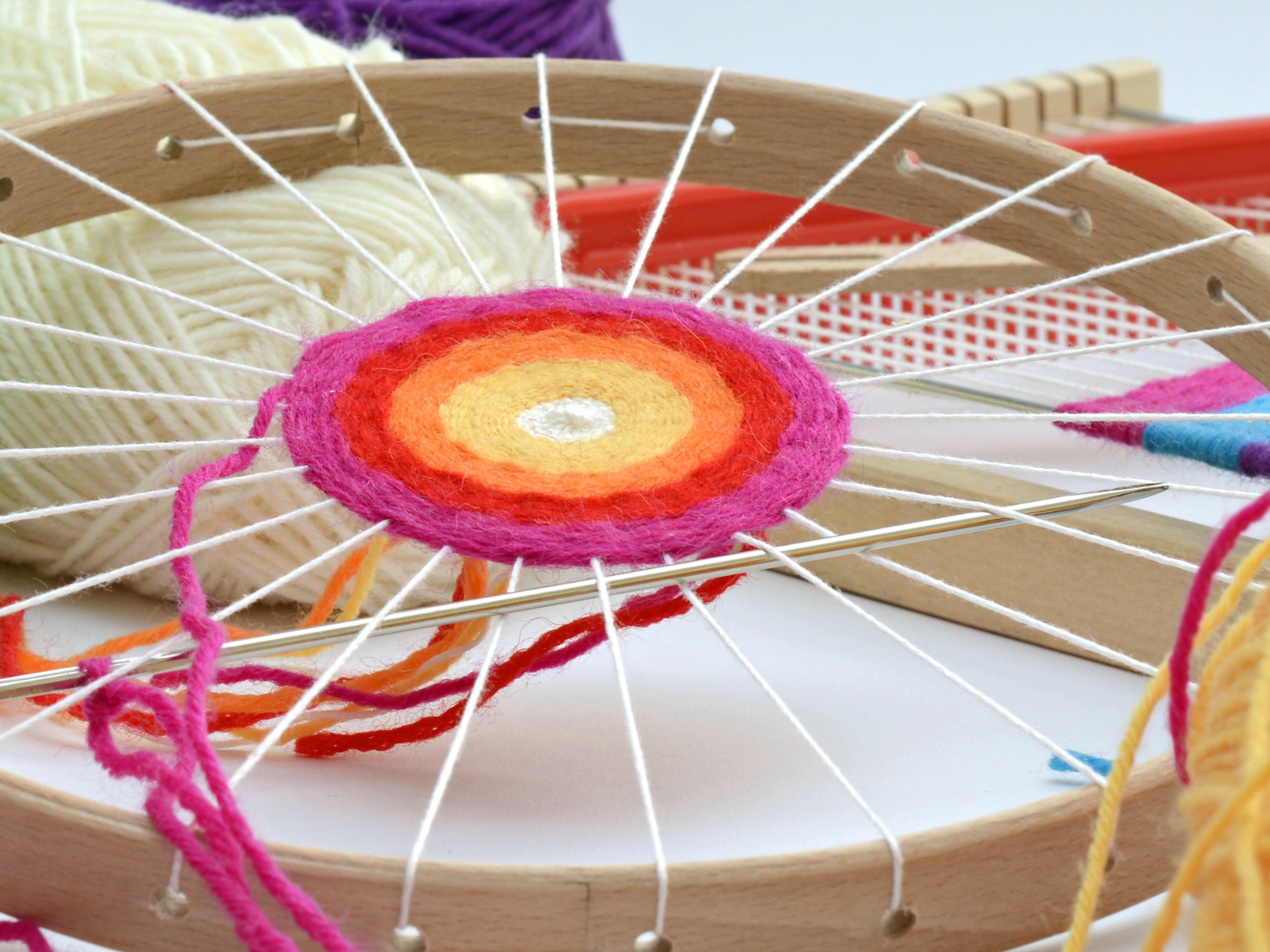


Woven Benefits: Why Weaving is More Than Just a Hobby
Weaving isn't just a fun and relaxing craft; it also has numerous therapeutic benefits.
This ancient art can help you to focus, gain a sense of accomplishment, and even reduce anxiety and depression; weaving can be a great way to relax and express yourself in a creative way.
But did you know that it also has surprising mental, physical and emotional benefits?
Weaving isn't just about creating beautiful textiles; it also offers a plethora of mental and emotional benefits.
Let's take a look at some of the ways weaving can have an impact on your well-being.
- Therapeutic qualities:
The act of of weaving can have a calming effect, making it an excellent stress-reliever.
Weaving also helps to improve focus; it allows you to switch off from the outside world and focus on the task at hand, making it perfect for those looking to improve their concentration and mindfulness.
It's an excellent way to keep mentally and emotionally healthy because the repetitive, meditative nature of weaving can help to reduce anxiety and depression, giving you a sense of control and accomplishment.
If you're feeling overwhelmed, this is a great way to take a step back and focus on something calming.
Say goodbye to meditation apps and hello to your new zen zone!
- Boosts creativity:
With endless combinations of colors, patterns, and textures, weaving allows you to unleash your inner artist and think outside the (loom) box.
It encourages you to experiment, express yourself and let your creativity flow.
The creative possibilities are endless, giving you the perfect outlet for self-expression.
And when it comes to finding inspiration, the internet is chock full of weaving tutorials and resources, as well as online forums for exchanging tips and advice.
Weaving gives you the freedom to create something unique and special.
It allows you to express yourself in a creative, meaningful way, and the end result is something to be proud of.
You can make whatever you like – from intricate wall hangings to colorful bracelets – and the possibilities are endless.
Weaving may not be the most conventional way to express yourself, but it sure is a fun one!
- Improves dexterity:
Weaving can also help to improve hand-eye coordination, as it requires you to manipulate small objects and visually track the individual strands of yarn.
This can help strengthen your hands and fingers, giving you greater dexterity in other tasks.
- Feel connected:
Weaving isn't just about making something with your hands – it's also about connecting with others.
Many communities have weaving groups, where members can get together to share tips and trade stories.
You may even find yourself connecting with like-minded people across the globe – an excellent way to make friends, learn new techniques, and exchange ideas!
- Enhances cognitive skills:
Weaving requires focus, problem-solving, and hand-eye coordination, making it a brain workout in disguise.
It can help improve your memory, pattern recognition and analytical skills, as well as boosting concentration.
That's why weaving can be a great activity for those looking to stay sharp and keep their minds active.
Who knew crafting could be so mentally stimulating?
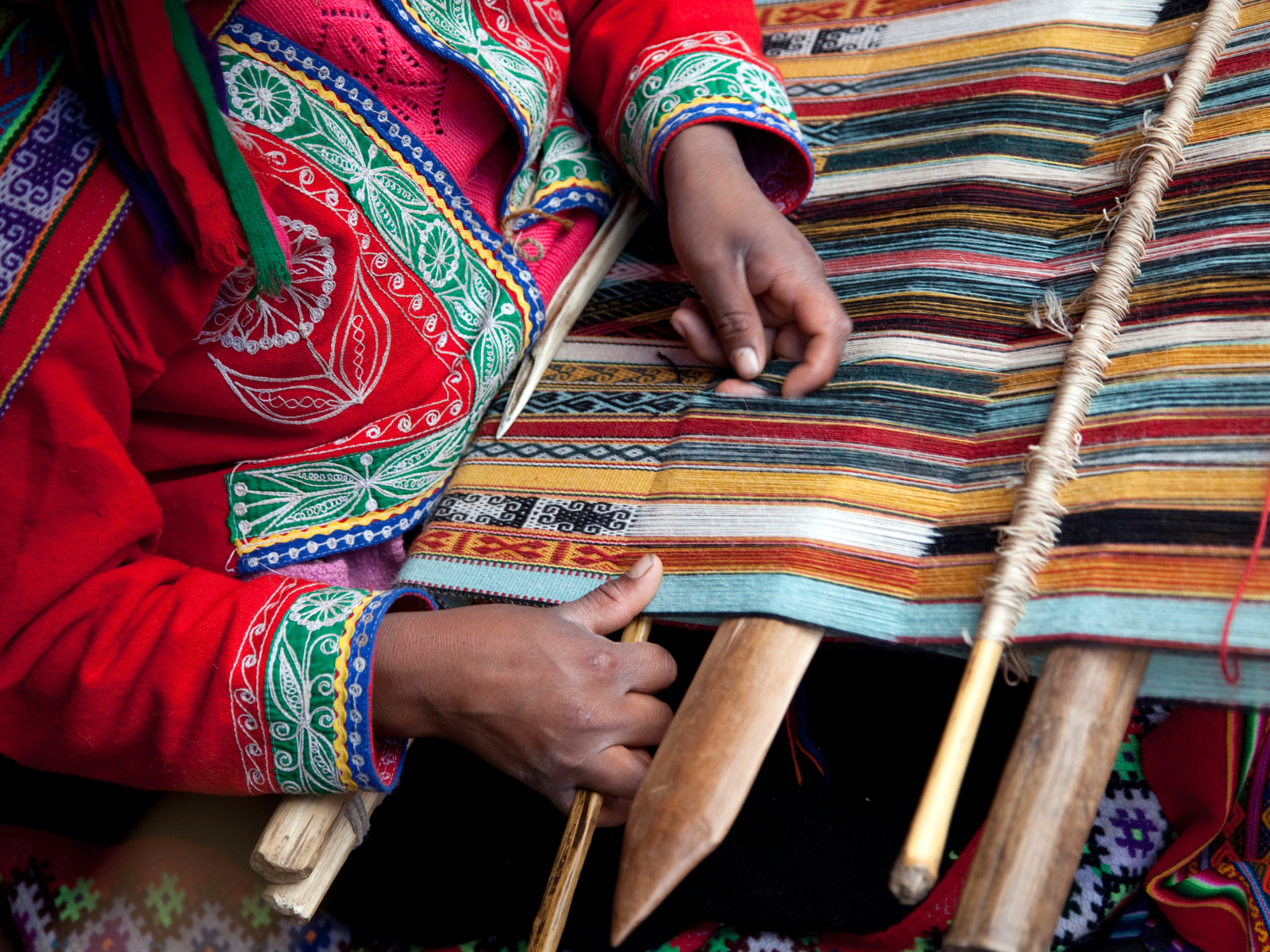
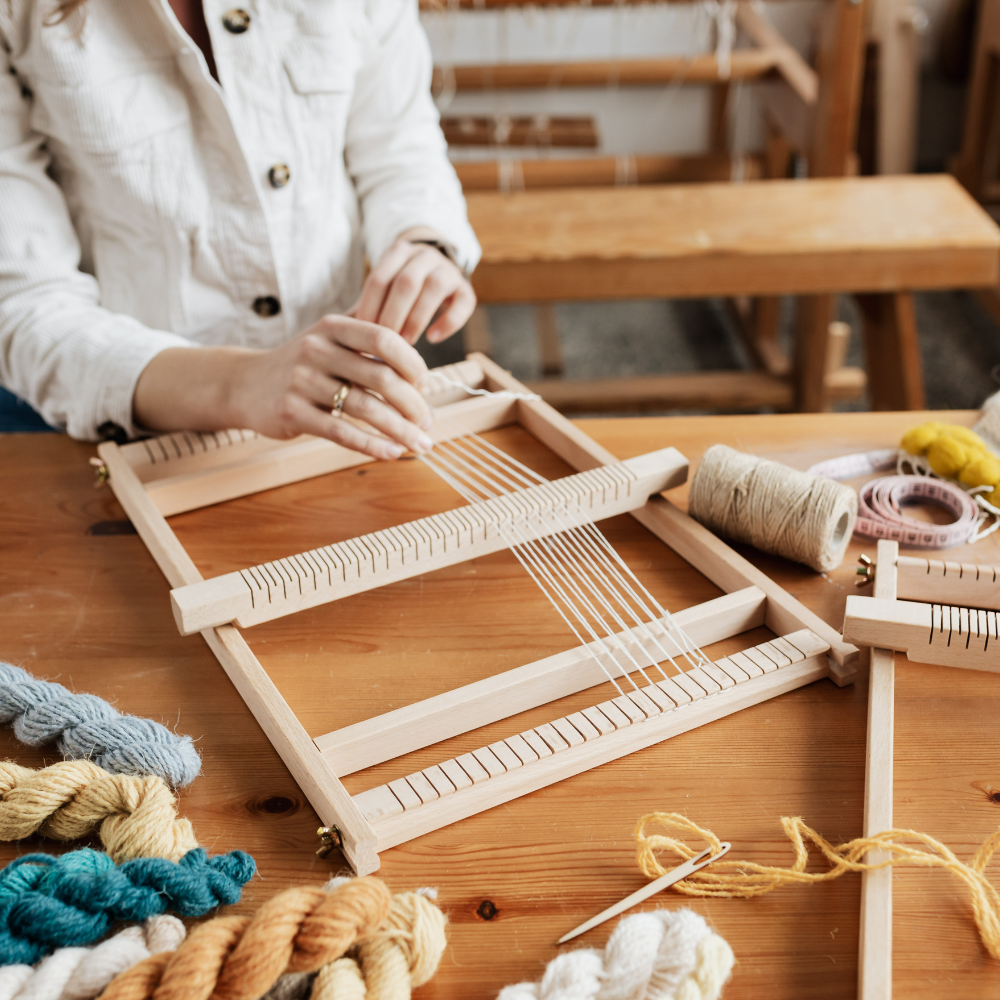

Weaving Wonderful Woven Masterpieces
Weaving is an ancient art form that has been around for centuries.
There are a variety of weaving techniques, from simple frame looms to complex mechanical looms.
It is an excellent way to tap into your creativity and express yourself in a unique and meaningful way.
Plus, it offers numerous therapeutic benefits, such as reducing stress and improving dexterity.
Embarking on your weaving journey not only connects you with a rich cultural history while providing an enjoyable and therapeutic activity; it also allows you to make something beautiful.
So, if you're looking for a new hobby or an outlet to express yourself, give weaving a go!
You might just find yourself tangled up in a new passion that you never knew existed.
It's time to get your loom ready, grab some yarn, and get weaving!
Who knows where your creativity will take you?
Happy weaving!
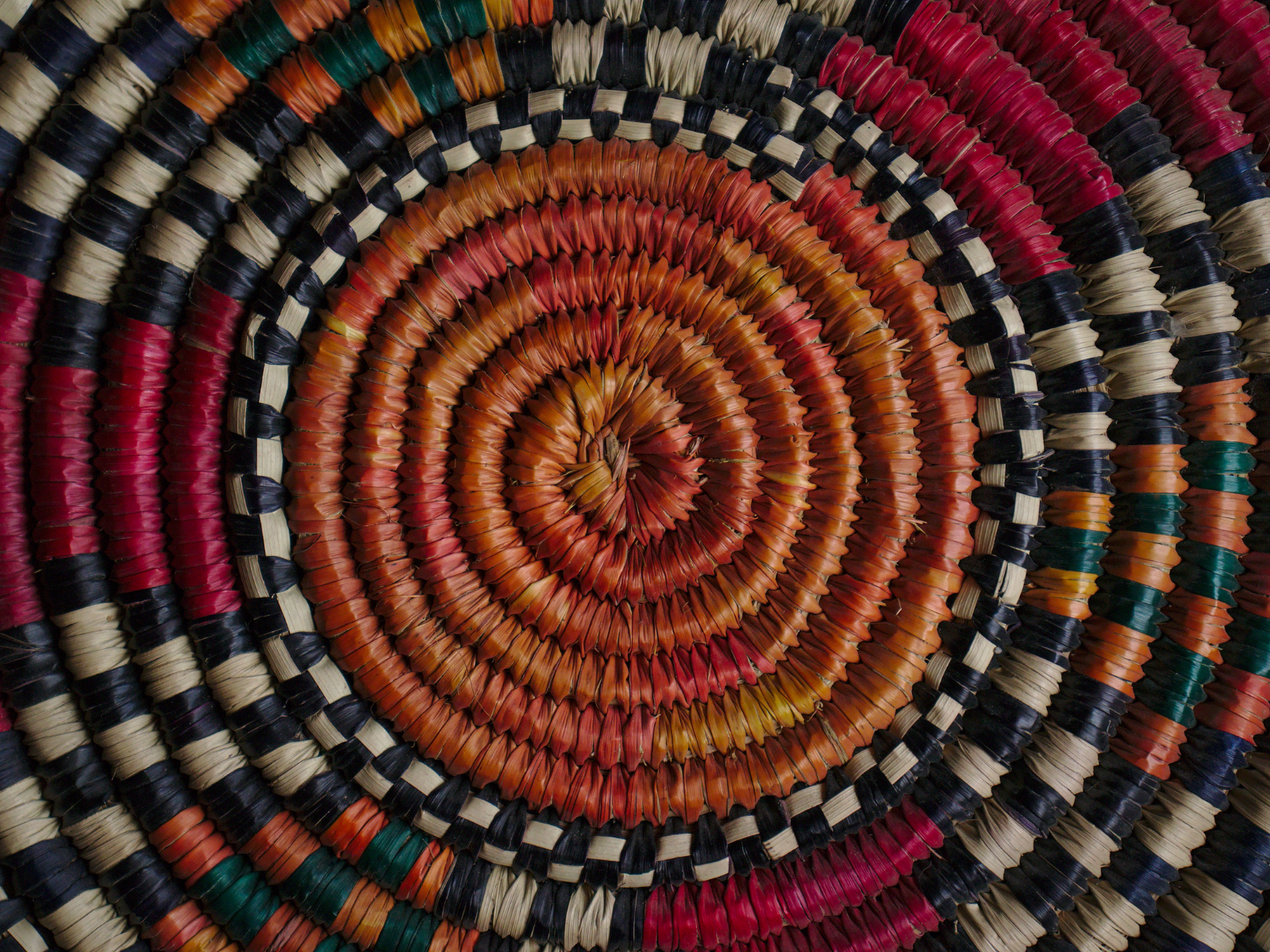
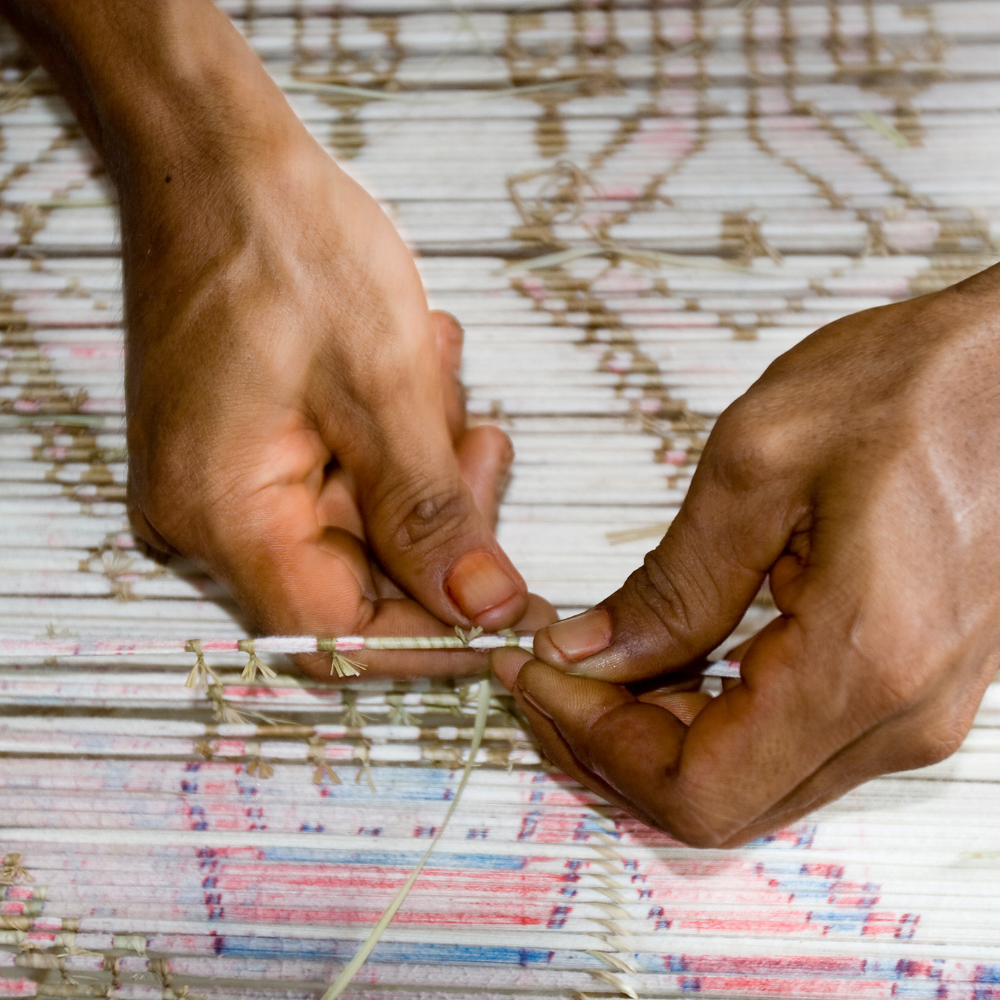

Looking to learn more about weaving? Check out Fibers and Design Weaving's video!
Want even more content about creativity and art?
Be sure to check out all of our creative chronicles!
Ready to get creative and craft with fabrics?
Check out some of our other textile articles:




